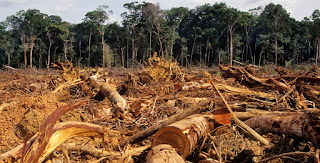In April 2020, just at the start of the pandemic, an announcement caught my eye. It was from my former employer British American Tobacco, the maker of brands like Lucky Strike, Dunhill, and Benson & Hedges. BAT through its subsidiary had jumped into the vaccine developing race. The vaccine would be produced using a tobacco plant. Most people found it counter-intuitive that tobacco should be used to save lives.
*****
Conventional vaccines are expensive to make, their
technology is complex. They need trained human resources, strict quality
control. In non-pandemic times, it is difficult to find investors for vaccines.
As we know; cold chain, maintaining a constant temperature from the factory to
the human arm, is essential. Vaccines like Pfizer and Moderna require specialized
freezers making them unsuitable for the developing world.
What is the solution? Use plants to make vaccines.
The theory was developed some thirty years ago. For proof-of-concept,
scientists have used potatoes, rice, spinach, lettuce, corn and other plants to
make vaccines for dengue, polio, malaria and plague. In 2006, a vaccine was
approved for a disease infecting poultry. But no vaccine is yet successfully developed
for humans.
*****
Conventional vaccines need lab-controlled live cells (from
monkey kidneys, insects, hamster ovaries etc.). These cells are infected with a
virus or a viral genetic code that tricks the cells to make copies. The cell
lines are incubated in large, metal bioreactors for weeks. Later, they undergo
a lengthy and complex purification process before the vaccine soup is packaged
into vials.
These bioreactors are expensive and need specially
trained staff to handle them. The risk of contamination is high, so bio-reactors
require a separate building and tightly controlled sterile conditions.
Plants eliminate the need for bioreactors, because
they themselves are bioreactors. Plants can be grown in greenhouses to keep
them safe from pests, but they don’t require sterile conditions. Plants were
known to be a rich source of pharmalogically important compounds. But only
recently, thanks to biotechnology, plants can be modified in a targeted way.
This is called “pharming”. The modified plants are the lab mice of the plant
science world.
If this technology succeeds, vaccines can be mass
produced in any part of the world, fairly cheaply.
*****
Two biotech companies, one in Canada and the other a
BAT subsidiary in the USA, are using the tobacco plant, Nicotiana benthamiana as bio-factories.
To make the vaccine, tobacco seeds are first planted
in a greenhouse. When the plants are 25 days old, they are dipped into a
solution containing agro-bacteria. These are micro-organisms to infect plants.
Under the current project, they are modified to contain instructions for making
a protein from the coronavirus. The plants follow these instructions.
Seven days later, the plant is harvested. It goes
through an extraction and purification process, and at the end of the cycle,
produces 99.9% pure protein.
Another set of plants produces a tiny particle for
packaging the viral protein. The two components are chemically attached to each
other. The resulting compound can be injected into a human as a vaccine. When
presented to the body, it looks and generates a response like a virus, though
it has no genetic material inside.
*****
Why tobacco? Tobacco has all the properties to become
an ideal pharming platform. It grows quickly, is leafy, and is a widely known
plant internationally. In laboratories, it has managed to produce antibodies
against HIV and Ebola.
With the cigarette markets shrinking in the developed
world, tobacco farmers are worried. They want to maintain their profits, and
de-stigmatise the crop if possible.
*****
British American Tobacco’s covid-19 vaccine is
undergoing stage III trials. The company expects to offer the vaccine for
approval later this year. There are more than a billion smokers in the world.
If they learn the vaccine is made from a tobacco plant, they may happily come
forward to take a shot.
Ravi









